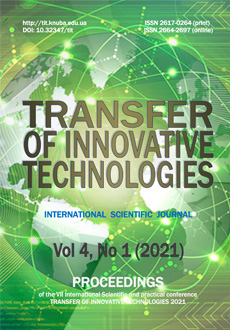Simulation of cyber threats for the Internet of Things
DOI:
https://doi.org/10.32347/tit2141.0303Keywords:
Internet of Things, cyber attack, standard protocol, device protection, information securityAbstract
The modern world is impossible to imagine without information technology. Such technologies are based on the use of computer equipment and means of communication. Both in the real world and in the virtual world, there are crimes called "cybercrimes". Thus, energy facilities, transport systems, financial and banking structures, military and law enforcement agencies, trade, medical and scientific institutions are potential victims of cybercrime, including cyberterrorism. Surveillance cameras, motion sensors, biochips, smart appliances - all these things simplify our daily lives and make our modern life more comfortable. As the number of devices connected to the network grows, so does the number of cyber threats. For example, the smart refrigerator became part of the botnet and began to spread spam, and the smart coffee machine was the cause of the attack on industrial networks with the subsequent infection of computers. The Internet of Things, which in turn is simple and difficult to implement, also has some problems with information security. Sometimes developers, intentionally or unintentionally, leave an undocumented channel, which not only collects information about the use of the device, but also allows you to penetrate into the personal space of the end user. In case of personal data leakage, the purpose of fraudsters is usually personal data: names, postal addresses, e-mail addresses, credit card details or account information. This allows you to order goods online under someone else's name and pay for them using someone else's debit card or debiting a certain account. For the same purpose, phishing can be used, which involves the use of fictitious websites, e-mails or text messages to access personal data.
References
Futurum [Електронний ресурс]: «Інтернет Речей: концепція ІоТ». ‒ Режим доступу: https://futurum.today/internet-rechei-kontseptsiiaiot-shcho-chekaty-vid-maibutnoho/ (дата звернення: 19.04.2021).
AppTractor [Електронний ресурс]: «Ин-тернет вещей». ‒ Режим доступу: https://apptractor.ru/internet-veshhey (дата звернення: 19.04.2021).
Bill Glover, Himanshu Bhatt (2006) RFID essentials. O'Reilly Media, Inc., ISBN 0-596-00944- 5, 88-89.
UMD Department of Computer Science [Електронний ресурс]: «An Initial Security Analysis of the IEEE 802.1x Standard». ‒ Режим доступу: http://www.cs.umd.edu/
~waa/1x.pdf (дата звернення: 19.04.2021).
IEEE SA [Електронний ресурс]: «Official IEEE 802.11 Working Group Project Time-lines». ‒ Режим доступу: http://grouper.
ieee.org/groups/802/11/Reports/802.11_Timelines.htm (дата звернення: 19.04.2021).
Cisco [Електронний ресурс]: «Cisco Wire-less LAN Security Web site». ‒ Режим до-ступу: http://www.cisco.com/go/
aironet/security (дата звернення: 19.04.2021).
Downloads
Published
How to Cite
Issue
Section
License

This work is licensed under a Creative Commons Attribution-NonCommercial-NoDerivatives 4.0 International License.
Our journal abides by the CREATIVE COMMONS copyright rights and permissions for open access journals.
Authors, who are published in this journal, agree to the following conditions:
1. The authors reserve the right to authorship of the work and pass the first publication right of this work to the journal under the terms of a Creative Commons Attribution License, which allows others to freely distribute the published research with the obligatory reference to the authors of the original work and the first publication of the work in this journal.
2. The authors have the right to conclude separate supplement agreements that relate to non-exclusive work distribution in the form in which it has been published by the journal (for example, to upload the work to the online storage of the journal or publish it as part of a monograph), provided that the reference to the first publication of the work in this journal is included.




